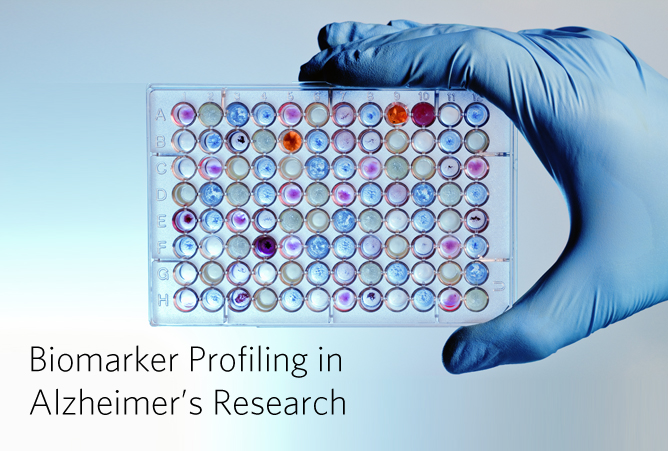
Dementia—a general term, defined by the Alzheimer’s Association as conditions in which neurons in the brain begin to die. The most common form of dementia is Alzheimer’s Disease (AD). It’s the reason why everything about an individual changes—it affects memory, speaking, judgment, and problem-solving abilities. Ultimately, it is fatal.
The World Alzheimer’s Report shows that the number of people living with dementia is staggering—36 million worldwide. By 2030, that number is anticipated to reach 66 million, and 115 million by 2050. The majority of these individuals will have Alzheimer’s Disease.
AD is a complex disease, and involves the aggregation of amyloid β (Aβ) and tau proteins in the spaces between nerve cells. These proteins can be biomarkers that are measured within the cerebrospinal fluid (CSF) to monitor AD progression. The discovery of these biomarkers could indicate the onset of AD years prior to the occurrence of dementia.
Laboratories have traditionally used ELISA to measure biomarkers—which is limiting, since only one biomarker can be measured at a time. Multiplexed biomarker assays, such as those developed on the Luminex® xMAP® platform, are ideal for this type of work.
Luminex internally dyes bead sets with concentrations of fluorescent dyes, resulting in 500 distinctly colored bead sets. Each bead set can be coupled with reagents for specific bioassays, such as antigens, antibodies, or oligonucleotides. The bead mixture is incubated with the sample and, using a reporter dye, quantifies the amount of bound analyte.
Depending on the Luminex instrument used, up to 500 bead types can be used in wells of 96- or 384-well plates, which result in high-throughput and high-content data. Multiplexed assays also utilize smaller sample sizes than ELISA, making them more cost-effective and efficient for use with samples.
If you’d like to learn more about the different assays that have been externally developed for neurodegenerative research, download our free white paper, “Biomarker Profiling in Alzheimer’s Disease Research”.
If you’re interested in learning more about creating your own assays, make sure to download our free xMAP Cookbook.